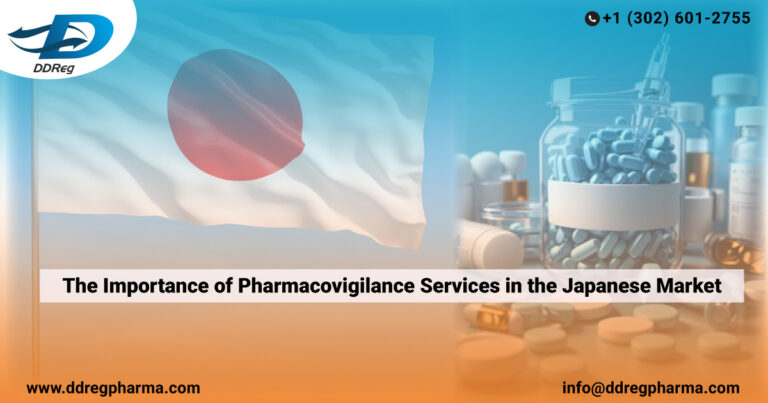
Contents
Japan is renowned for its advanced healthcare system and stringent regulatory standards. For global pharmaceutical companies looking to enter or expand in the Japanese market, understanding the local pharmacovigilance Services(PV) and regulatory environment is crucial. This blog provides an overview of Japan’s pharmacovigilance and regulatory services, highlighting key aspects that global pharmaceutical companies should consider.
Understanding Pharmacovigilance in Japan
Pharmacovigilance in Japan is governed by the Ministry of Health, Labour and Welfare (MHLW) and the Pharmaceuticals and Medical Devices Agency (PMDA). These agencies ensure that pharmaceutical products are safe and effective for public use. The pharmacovigilance framework in Japan includes several critical components:
- Adverse Event Reporting: Pharmaceutical companies must report adverse events to the PMDA within specified timeframes. This includes both serious and non-serious events, ensuring continuous monitoring of drug safety.
- Pharmacovigilace Risk Management Plans (RMPs): RMPs are mandatory for new drugs and are designed to identify, characterize, and minimize the risks associated with pharmaceutical products. These plans must be submitted to the PMDA and updated regularly.
- Periodic Safety Update Reports (PSURs): PSURs provide a comprehensive assessment of the risk-benefit balance of a drug. These reports are required periodically and help in maintaining ongoing surveillance of drug safety.
- Good Pharmacovigilance Practices (GVP): Adherence to GVP is mandatory for all pharmaceutical companies. GVP guidelines cover the entire lifecycle of a drug, from development to post-marketing surveillance, ensuring systematic and effective PV practices.
Regulatory Services in Japan
Japan’s regulatory landscape is characterized by rigorous processes aimed at ensuring the safety, efficacy, and quality of pharmaceutical products. Key regulatory services include:
- Marketing Authorization Applications (MAA): To market a drug in Japan, companies must submit an MAA to the PMDA. The application process involves comprehensive data submission, including clinical trial results, manufacturing details, and safety information.
- Clinical Trials: Conducting clinical trials in Japan requires approval from the PMDA. The agency provides guidance on trial design, ethical considerations, and regulatory requirements, ensuring that trials meet international standards.
- Post-Marketing Surveillance: Once a drug is approved, post-marketing surveillance is crucial for monitoring its safety and effectiveness in the real-world setting. This includes adverse event reporting, periodic safety updates, and ongoing risk management.
- Regulatory Consulting Services: Given the complexity of Japan’s regulatory environment, many global companies engage local regulatory consulting firms. These firms provide expert guidance on navigating the regulatory process, ensuring compliance, and expediting market entry.
Key Challenges and Considerations
Global pharmaceutical companies face several challenges when entering the Japanese market:
- Cultural and Language Barriers: Understanding and navigating the regulatory framework in Japan can be challenging due to language barriers and cultural differences. Engaging local experts can help bridge this gap.
- Stringent Regulatory Standards: Japan’s regulatory standards are among the highest in the world. Companies must ensure that their products and practices meet these stringent requirements.
- Complex Approval Processes: The approval process in Japan can be lengthy and complex. Early and thorough preparation, including comprehensive data submission and proactive communication with regulatory authorities, is essential.
- Post-Marketing Commitments: Continuous post-marketing surveillance and compliance with RMPs and PSURs are mandatory. Companies must have robust systems in place to meet these ongoing obligations.
Conclusion
Japan pharmacovigilance services and regulatory environment is robust and comprehensive, ensuring the highest standards of drug safety and efficacy. For global pharmaceutical companies, understanding and complying with these regulations is crucial for successful market entry and sustained operations. Engaging with local regulatory experts, investing in thorough preparation, and maintaining ongoing vigilance are key strategies for navigating Japan’s complex regulatory landscape.